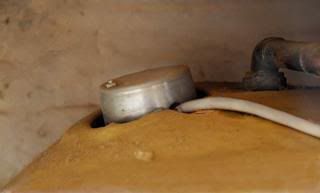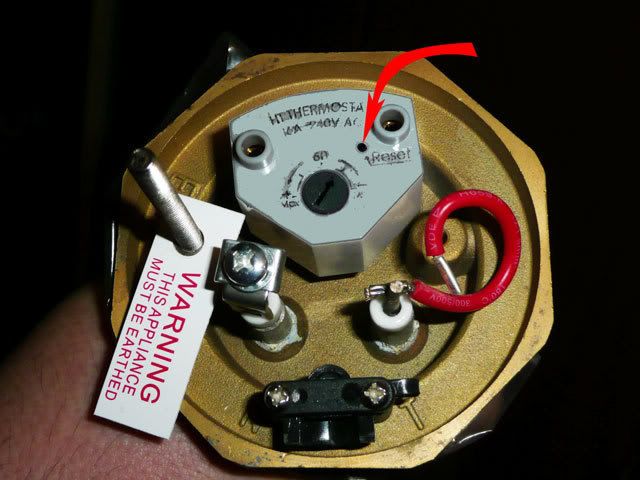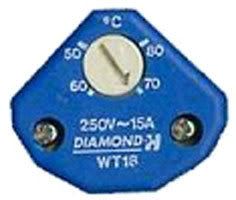IN the news - again.
If the thermostat in a hot water cylinder fails, the cistern (tank) in the loft can soften and dump 250kg of near boiling water through the ceiling. This has caused death several times in the last few years.
This is how it happens: ©ChrisR
New design thermostats were introduced in 2004. If you haven’t changed the immersion heater or its thermostat since then, you will have the old type. When those fail, they fail “on” which means there’s nothing to stop the water boiling.
The post 2004 thermostats have an extra safety thermostat built-in, which switches off if the temperature of the water gets above the normal range. It does NOT reset itself when the water cools.
They can be easily fitted by someone competent to do basic electrical connecting, and only cost a few pounds. It’s a totally “dry” procedure!
MAKE SURE THE POWER’S OFF FIRST!!
Once the wires are removed from the terminals, the thermostat simply slides out. The replacement should be the same length as the one which comes out The’re shorter than you might think, eg an 18 inch thermostat goes in a 27 inch immersion heater, which you’d find in the top of a 36 inch high cylinder.
The new ‘stat will have the same two terminals, no extra ones.
References:
http://www.hse.gov.uk/services/localgovernment/alert.htm
http://www.iphe.org.uk/databyte/tank_cistern_installation.pdf
Immersion heater heads:


Note the new type themostat typically has a tiny reset button.

The old ones didn’t:

A Secondary but VERY IMPORTANT issue is the SUPPORT of the CW cistern. This must be large enough to support the whole of the base of the cistern, and be made of suitable material. This will in some sources be found as “Marine ply” 19mm thick. However, the requirements of “Marine” includes surface quality, which in my view is not important. The same resistance to boiling water is provided by any “W.B.P.” ply (“Water and Boil proof”)
See http://www.wras.co.uk/PDF_Files/Scalding information note Jan 08.pdf
I have not yet got to the bottom of any changes in the BS of cold water cisterns. However many round ones have been found to be doughnut shaped where boiled water has circulated.
The point is that if the heating controls are adequate, this should not be a concern.
There are those who feel that the vent pipe should go outside, which would also remove the problem. However, this is not the BS way.